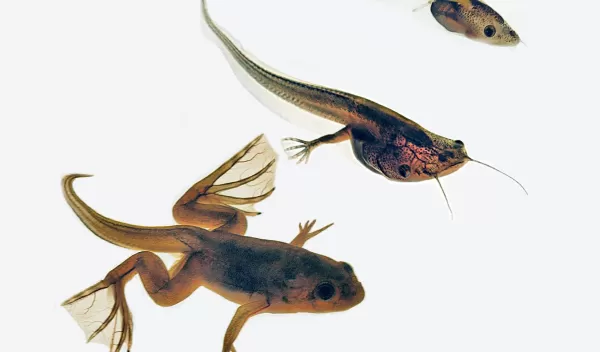
Fat Regulating Hormone Found in Amphibian
For the first time, researchers have identified an amphibian version of the human hormone leptin. While the hormone's impact on human development is unclear, the new study suggests leptin plays an important role in tadpole growth and development.
"Leptin likely sets the stage for growth and development, both signaling to the brain that there are sufficient energy stores and directly promoting tissue growth and development," said University of Michigan biologist Robert Denver. "Given its central role in energy balance, leptin may play a role in timing tadpole metamorphosis, a critical amphibian life history trait."
Leptin is secreted by fat cells and helps regulate food intake in humans and other mammals. However, the recent findings are the first linking leptin to limb and digit growth, and the first to reveal the hormone in a cold-blooded animal, the South African clawed frog (Xenopus laevis).
Denver and his postdoctoral fellow Erica Crespi, now at Vassar College, published their findings in the June 27, 2006, Proceedings of the National Academy of Sciences. The work was supported by the National Science Foundation.
Crespi and Denver gave doses of leptin to frogs at different developmental stages, from tadpole to adult. As in mammals, leptin acted on the amphibian's brain to suppress appetite - older tadpoles stopped eating and even lost weight. But the hormone had a different effect on the younger tadpoles. After a dose of leptin, they did not lose their appetites, and instead, began to grow limbs prematurely.
The timing of the change from tadpole to adult frog is crucial to their survival. Young tadpoles must eat and grow quickly to avoid becoming prey, but without developing limbs too soon.
Denver suggests that in the early stages of tadpole development, leptin does not affect appetite so growth can continue at a rapid pace. But the hormone does appear to signal when the tadpoles have eaten enough and possess sufficient fat reserves to support limb growth.
For more information, see the University of Michigan press release at the link below.
--Michele Siegle Coghill
